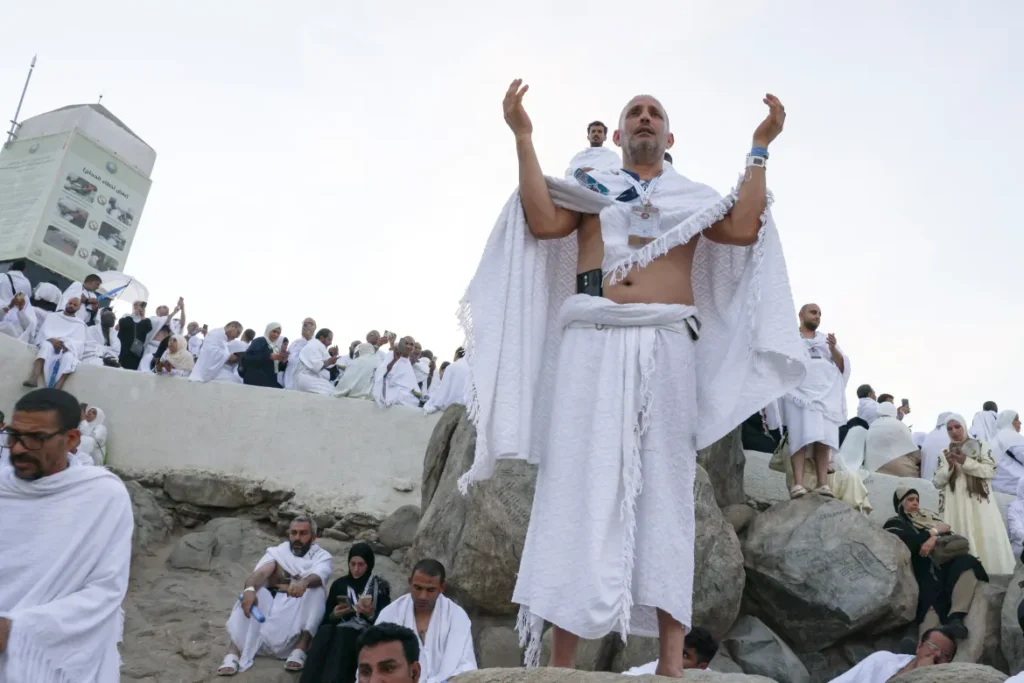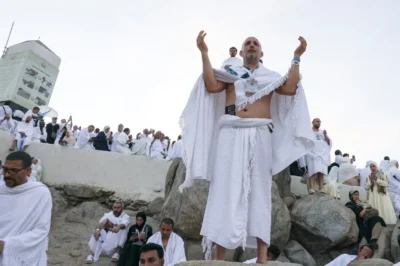
A Spiritual Gathering of Unprecedented Scale
On June 5, 2025, over 1.5 million Muslim pilgrims from around the globe converged at Mount Arafat, marking the pinnacle of the annual Hajj pilgrimage. This sacred day, known as Yawm al-Arafah, is considered the holiest in the Islamic calendar. Pilgrims, dressed in simple white garments, ascended the rocky slopes of Mount Arafat, approximately 20 kilometres east of Mecca, to engage in deep reflection, prayer, and supplication. This day commemorates the moment when Prophet Muhammad delivered his final sermon, emphasizing equality, unity, and devotion to Allah.
A Day of Devotion and Reflection
The atmosphere atop Mount Arafat was charged with spiritual fervour as pilgrims stood shoulder to shoulder, seeking forgiveness and mercy from Allah. Many raised their hands in prayer, some with tears streaming down their faces, while others recited verses from the Qur’an or offered personal supplications. The day was marked by a collective sense of humility and devotion, with worshippers expressing gratitude and seeking blessings for themselves and their loved ones.
Challenges Amidst the Heat
The spiritual significance of Yawm al-Arafah was accompanied by physical challenges, as temperatures soared to 46°C (114.8°F) on the plains of Arafat. Pilgrims, many of whom had travelled from distant lands, endured the intense heat, often carrying umbrellas or wearing hats to shield themselves from the sun. Saudi authorities had implemented measures to mitigate the effects of the heat, including the installation of misting machines and the distribution of water to ensure the well-being of the pilgrims.
A Symbol of Unity and Equality
The gathering at Mount Arafat served as a powerful reminder of the unity and equality inherent in Islam. Regardless of nationality, race, or social status, all pilgrims stood together in prayer, embodying the Islamic principles of brotherhood and humility. This collective act of worship underscored the shared spiritual journey of Muslims worldwide and highlighted the significance of communal worship in Islam.
Global Solidarity and Prayers for the Needy
Beyond personal supplications, many pilgrims used this sacred occasion to pray for the well-being of others, particularly those facing hardship. In the context of ongoing conflicts, such as the situation in Gaza, numerous worshippers offered prayers for peace, justice, and relief for affected communities. This act of solidarity reflected the broader Islamic ethos of compassion and concern for the less fortunate.
The Journey Continues
Following the Day of Arafah, pilgrims proceeded to Muzdalifah, where they spent the night under the open sky, collecting pebbles for the symbolic stoning of the devil ritual. This act, performed in Mina, represents the rejection of evil and the reaffirmation of faith. The culmination of these rites leads to the celebration of Eid al-Adha, a festival commemorating Prophet Ibrahim’s willingness to sacrifice his son in obedience to Allah.
Conclusion
The gathering at Mount Arafat on Yawm al-Arafah stands as a testament to the enduring spirit of devotion, unity, and equality in Islam. Despite the physical challenges posed by the extreme heat, the pilgrims’ unwavering faith and commitment to the rites of Hajj underscored the profound significance of this sacred day. As they continue their journey through the remaining rites of Hajj, the experiences and reflections from Mount Arafat will undoubtedly remain etched in their hearts, serving as a source of spiritual enrichment and communal solidarity.








































Leave a Reply